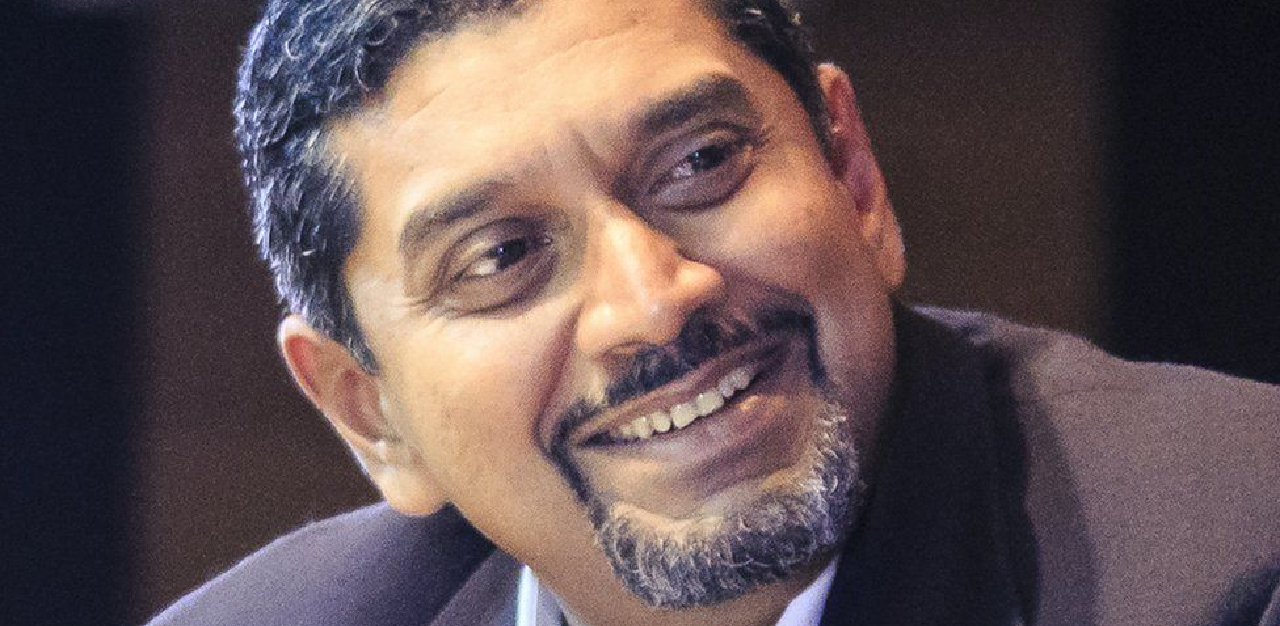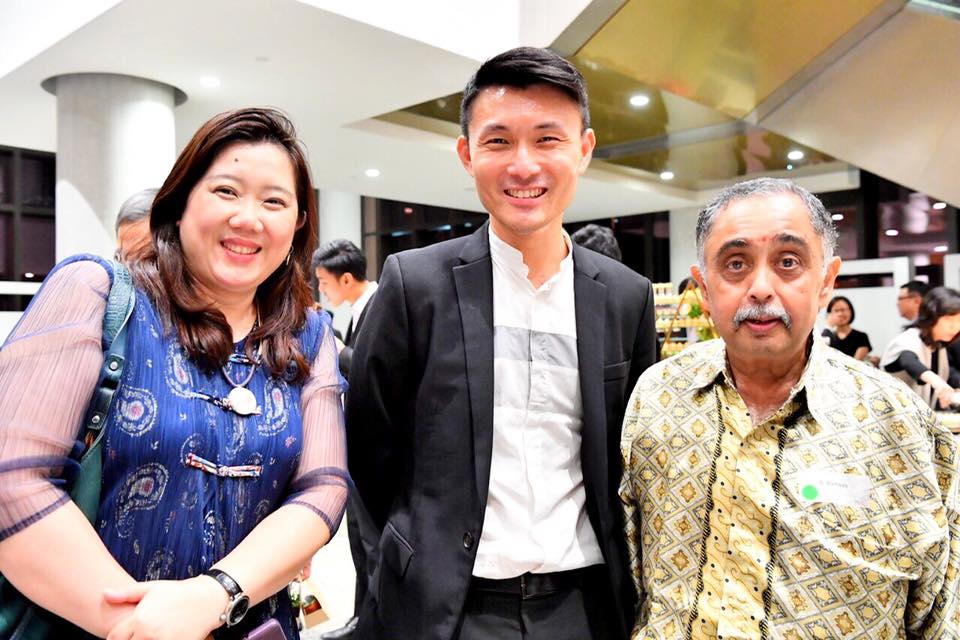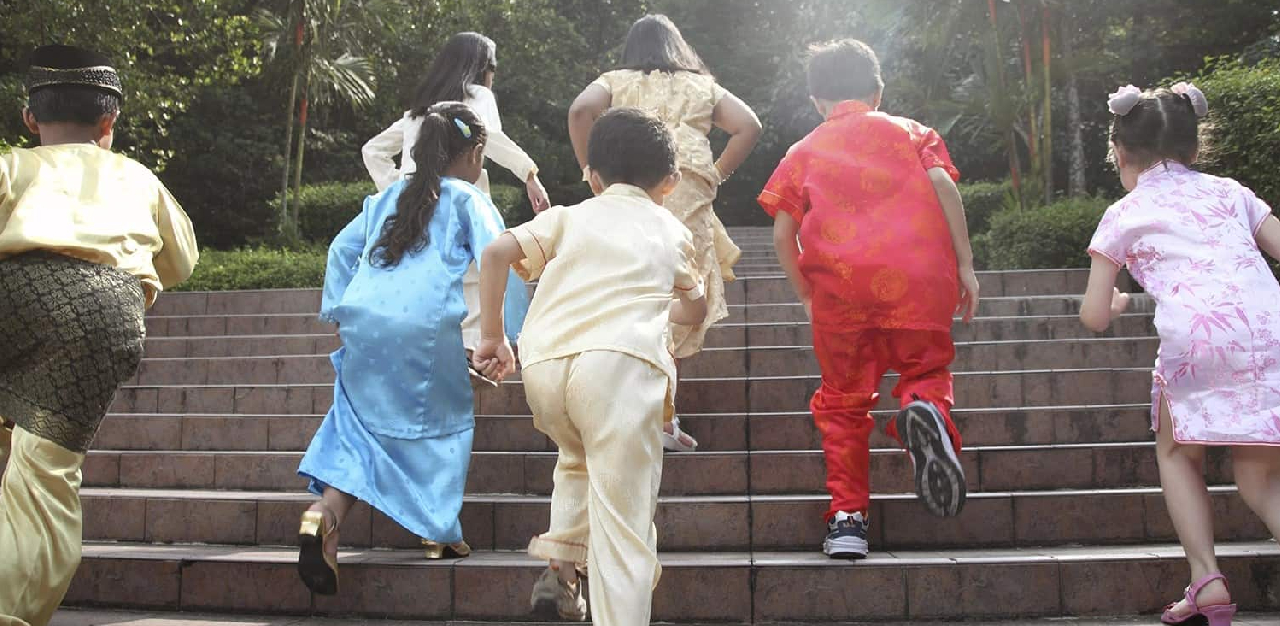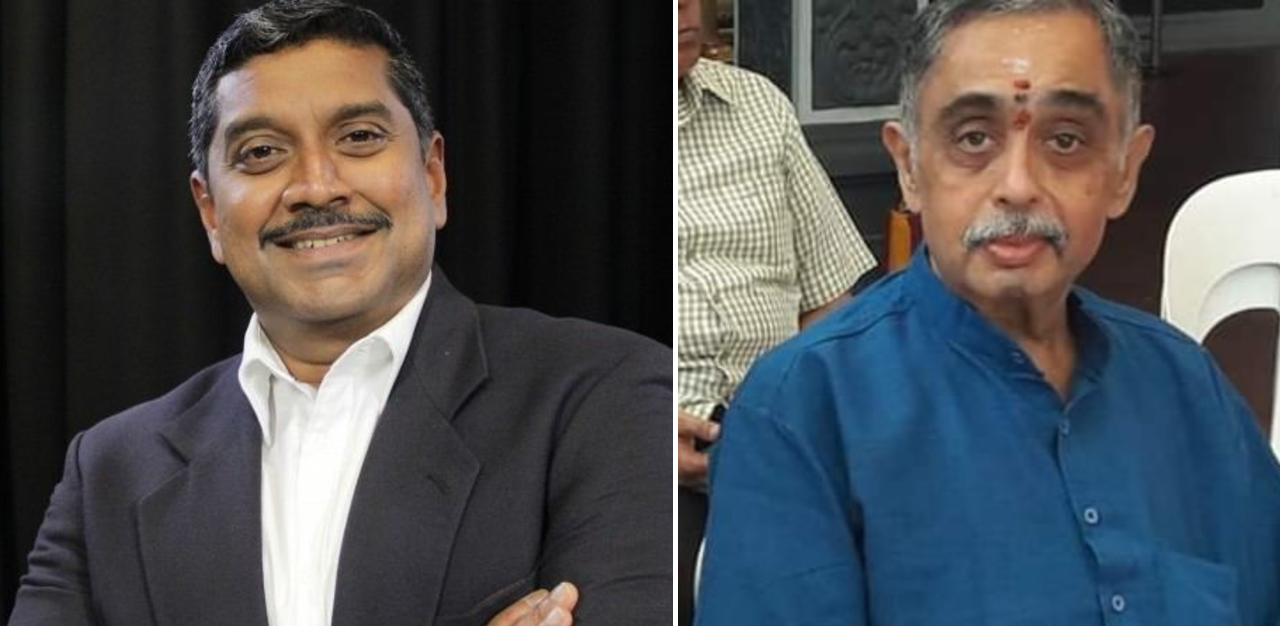Viewers “didn’t like watching darker-skinned presenters”.
The controversial remark was allegedly made by editor-in-chief of Mediacorp Walter Fernandez in 2018 and brought to light by former BBC journalist Sharanjit Leyl in BBC World Service radio series From Our Own Correspondent in early August (2021).
But do they?
The 48-year-old Ms Leyl, who left BBC News in June, was speaking in a segment on racial harmony in Singapore when she said that she struggled to get hired at the local news broadcaster some 20 years ago.
But this was not the case, according to former Nominated Member of Parliament (NMP) Viswa Sadasivan.
Experiences of hiring and role appointments as TV presenters
Mr Viswa, who anchored current affairs programmes such as Feedback and Talking Point in the early 1980s and late 1990s, says his shows saw great popularity.

“Viewership ratings were particularly high for these programmes. You could say that current affairs presenters such as Kenneth Liang and myself became household names,” he says.
Mr Viswa, who is currently the chief executive officer (CEO) of Strategic Moves, a strategic and crisis communications firm, says other “ethnic Indian news readers, such as Myrna Thomas and Shobi Pereira, shared popularity with other news readers like Diana Koh, Veronica Leng and later, Nicolette Rappa, who is Eurasian”.
“I don’t believe skin tone, race or religion had any bearing on viewership ratings,” Mr Viswa adds.
Former Mediacorp reporter Ramesh Subbaraman, agrees. He says he enjoyed his time at Channel NewsAsia (CNA). “I have no regrets in the work [I had] done in [my] 30 years as a TV journalist”.

“I was given many opportunities to travel with our leaders. I had many special interviews with local and foreign dignitaries. I was sent to cover disasters both at home and abroad [such as] the tsunami aftermath in Meulaboh,” he says.
Mr Ramesh adds: “I covered elections both in Singapore and Malaysia and I continue to keep my pulse on local and international happenings [today]. I have worked side by side with many minority colleagues. They have all done well in CNA and continue to do well in whatever fields they are [in] now after leaving CNA.”
In his 30 years, he adds, he had “never felt aggrieved”.
“I was satisfied with the opportunities given to me and I cherish them even today as an ex-journalist,” Mr Ramesh says, asking: “Where does colour and skin tone come into play at all?”
“I find it rather strange for Ms Leyl to bring up this matter now after she has left the BBC as its Southeast Asia correspondent,” Mr Ramesh says.
He feels that she, “asserting that she did not land a job at Mediacorp, or whatever the organisation was then called when she went for the interview, has to be justified with concrete evidence, [and] not just shooting bullets out of the blue”.
Mr Ramesh adds that there are better and healthier ways to voice grievances.

“If Mediacorp is not an equal opportunities company, there are many avenues of recourse for its disgruntled employees. There is the SUBE union which the staff can take up its complaints with,” he says.
Mr Ramesh notes that the union movement has now expanded to allow Professionals, Managers, Executives and Technicians (PMETs) to also be represented. “So the union speaking up [on the staff’s behalf] is no issue. There is also the Tripartite Alliance for Fair & Progressive Employment Practices (TAFEP) for unhappy employees to approach too,” he adds.
Mr Viswa was equally surprised.
“I know both of them (Ms Leyl and Mr Fernandez). Sharanjit is not exactly dark skinned, and from what I know of Walter, he does not have a racist orientation or inclined to discriminate based on skin tone,” he says.
Yet, Mr Viswa believes they are both speaking the truth.
“It is possible that Walter candidly shared the view that there is an audience preference for presenters and newscasters with a lighter skin tone. It need not be an opinion he agrees with, but an observation he shared. Context is important,” he says.
Question of racism, colourism and tokenism practices in the broadcast industry
In a multiracial population, there will always be minority groups; and in the pursuit for equality and diversity, practices of tokenism and racism may occur.

According to Mr Viswa’s observations, he says “there may have been some of this in the 1990s and early 2000s, but not today”.
“My personal observation is that there was a dearth of non-ethnic Chinese news readers and drama artists in mainstream TV in the late 1990s and early 2000s,” he adds.
As such, Mr Viswa says that there are “more substantive roles being assigned to Malay and Indian artistes in popular local English drama series such as Tanglin and Kin”.
However, he says that Singapore “can do better in English news, [for example having] more non-Chinese news readers”.
While Mr Ramesh feels there is a lack of representation, it is not due to tokenism, racism or colourism.
“My regret is some very capable minorities are not coming forward to take up role appointments,” he says.

Mr Ramesh says it could possibly be due to “inferiority complexes in some people”. He believes that “they under-estimate their own capabilities [and] that is the challenge – [helping] these capable people from the minority groups [to overcome] their fears and rising to shine”.
Changes in the media presenters’ scene
These veteran presenters have seen the media scene evolve since the 1980s. When posed the question on further changes, they hope to see, Mr Viswa puts things in perspective and says audience segmentation is a leading factor in decisions made at Mediacorp.
“I appreciate the need for the national broadcaster to be sensitive to the tastes and needs of its audience which is predominantly ethnic Chinese (75%). This has a strong bearing on viewership and therefore advertising revenue,” he says.
That is because the importance of “commercial considerations” is crucial and “cannot be ignored, especially in today’s competitive environment”.
Having said that, Mr Viswa reminds that the national and only broadcast station that is “wholly owned by Temasek Holdings and significantly funded by the government through IMDA, has a responsibility that goes beyond playing to the gallery, so to speak”.

“Mediacorp does have the responsibility to reflect aspirations enshrined in the national pledge – ‘regardless of race, language or religion’. It also has the responsibility of influencing attitudes so that they are more aligned with the ideals of a multiracial, multicultural Singapore,” he says, standing firm on the need for Mediacorp to do better in “ensuring a better racial mix of news and current affairs presenters and entertainment artistes”.
For Mr Ramesh, the content of the news broadcasts is the crux that needs to be improved.
“I would like to see more analyses of issues, value-add and research thrown into the presentations on the site. These days you find less of that. It is more churning out what the minister or official has said or what the news release carries,” he says.
The need for “background information presented or research done on what had happened before about a similar incident and how that was handled” is essential, and is something that Mr Ramesh thinks is lacking.
Multiracial fabric of society unweaving now or always hung by a thread
Still, did Ms Leyl speak up at a time where the multiracial fabric of Singapore’s society is unravelling now or reignite the issue that racial harmony has always hung by a thread here?

Mr Ramesh does not feel so. “Singapore’s multiracial fabric continues to remain strong. A few incidents here and there won’t shake it,” he says.
But this may not always last and cannot be taken for granted. Therefore, “what needs to be done is constant education of how important this pillar is for Singapore’s survival – a point made by founding Prime Minister Lee Kuan Yew”.
“It makes no sense to throw stones at one another,” Mr Ramesh adds.
Mr Viswa agrees. He does not feel there has been a particular unravelling of racial harmony.
“Frankly, I have not seen a spike in racism or discrimination against members of the ethnic minority communities. Yes, I have seen a clear increase in calling out of racism or discrimination. However, I am not persuaded that all of these claims or allegations are valid,” Mr Viswa says.
On the contrary, he fears the noise arising from the ground on racism will paradoxically exacerbate racial tension.

“What I am seeing is a surge in racialisation where there’s an increasing instinct to look at incidents or experiences through a narrow racial lens. My concern is that if we are too liberal in calling out racism or discrimination, it could very well become self-fulfilling,” he says.
What Singaporeans are trying to achieve is unrealistic and too idealistic, Mr Viswa adds. That is because “there’s no society that can legitimately claim to have zero racism – not even the more homogenous societies”.
“Having grown up in Singapore in the 1960s, I can say with conviction that we have come far and done well in keeping extreme racism or discriminatory practices under control. We now need to allow for greater honest discourse on the subject, but without the need for mudslinging, vitriol or practising “cancel culture”, he says.
This has worried Mr Viswa because he finds the current racial climate “toxic, unforgiving and dangerous”.
“If it does not abate, the outcome will be one where there are no winners,” he says.
“We have come this far, together, because we have embraced tolerance and acceptance, and a give-and-take culture. We need to continue with this, going forward,” Mr Viswa sums.
Join the conversations on TheHomeGround Asia’s Facebook and Instagram, and get the latest updates via Telegram.




























